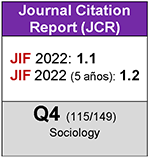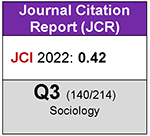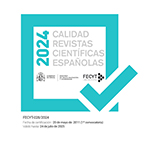¿Está cayendo realmente la fecundidad española?
DOI:
https://doi.org/10.5477/cis/reis.96.95Keywords:
Fecundidad, Efecto calendario, Índice Sintético de Fecundidad, Madres y maternidadAbstract
During the last 25 years, the Spanish birth rate, as measured by the ISF, has dropped
considerably, and is now among the lowest in the world. This has happened simultaneously with
a delay in the age for child-bearing. In this paper, we present the results of recent research into
the way that the delay in the age for child-bearing makes the ISF smaller than what would be
observed if the age for maternity were to remain stable. This is known as the calendar effect.
Applying to the Spanish case the methods for correction of the calendar effect as proposed by
Ryder; Bongaarts and Feeney, and Kohler and Philipov, here we demonstrate how the calendar
effect is particularly intense in Spain and that the majority of drops seen in first and second
births are due to the delaying of fertility. Had this delay not occurred, there would scarcely have
been any fertility drop in these two areas. What has characterised the recent drop in Spanish
fertility has been the drop in intensity in third and subsequent births. This is where we find the
reason why Spanish fertility, even after eliminating the calendar effect, fails to reach the level of
population replacement. The level that would be observed in the absence of fertility delay
would, as from 1985, mostly be between 1.7 and 1.9, a value which is significantly higher than
the ISF rates observed, which are around 1 to 1.3.
Downloads
Downloads
Published
How to Cite
Issue
Section
License
Copyright (c) 2024 Revista Española de Investigaciones Sociológicas

This work is licensed under a Creative Commons Attribution-ShareAlike 4.0 International License.
Permite Compartir — copiar y redistribuir el material en cualquier medio o formato, Adaptar — remezclar, transformar y construir a partir del material para cualquier propósito, incluso comercialmente.








